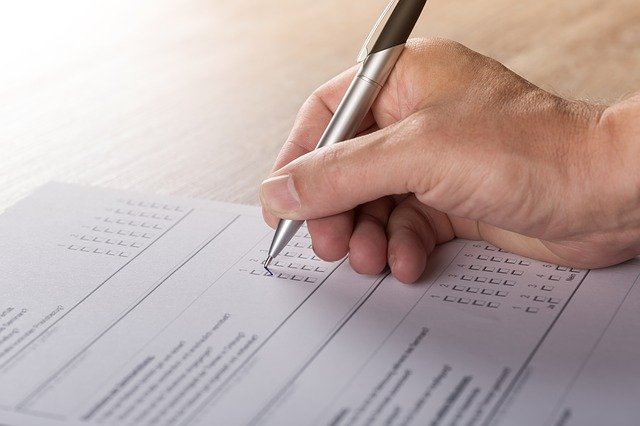BSBLED401
Assessment Task 1: Report writing
a). The Australian human rights commission has introduced laws for the protection of people from discrimination and harassment(Hardy et al., 2013).
b).The followinganti-discrimination laws are governed by the Commonwealth or Federal Government:
At a federal level:
- Age Discrimination Act 2004
- Australian Human Rights Commission Act 1986
- Disability Discrimination Act 1992
- Racial Discrimination Act 1975
- Sex Discrimination Act 1984.
At a state and territory level:
- Australian Capital Territory – Discrimination Act 1991
- New South Wales – Anti-Discrimination Act 1977
- Northern Territory – Anti-Discrimination Act 1996
- Queensland – Anti-Discrimination Act 1991
- South Australia – Equal Opportunity Act 1984
- Tasmania – Anti-Discrimination Act 1998
- Victoria – Equal Opportunity Act 2010
- Western Australia – Equal Opportunity Act 1984.
c).The Fair Work Act 2009 is looked by theFair Work Ombudsman (FWO)(Hardy et al., 2013).There are four enforcements to promote Commonwealth workplace lawunder this act. These are infringement notice which is a fine for violating pay slip and record keeping requirements, other is compliance notice that is a legal notice requiring the individual to take action to fix the breach, written enforcement undertaking in case of serious breach and litigation to enforce act and regulation and to obtain penalty for non-compliance.
d).Australian human rights commission governing anti-discrimination legislation in Australia.
e).Unlawful discrimination is treating an individual different or giving less favour due to different features (Sargeant, 2012) which can be gender, race, religion, ethnicity, caste, colour age, disability, etc. this can happen in training when the recruiter/manager do not take positive to fulfil training needs and do not offer training and exclude from development opportunity due to any attributes mentioned above.
f). Helen’s employer did not act in an ethical manner as the employer has rejected Helen from undertaking internal training which highlights violation of Age Discrimination Act 2004 under equality law.
g). Federal and state authorities can advise Helen to resolve the situation by reporting the problem to the HR and filing the Age Discrimination Claim to the authorities.
h). Performance and learning needshighlight educating about the technical literacy and training for the developing technical skill for performing job and improving performance at work.
- i) Self-evaluation of Mary as Administrative officer can be done through SWOT analysis that can identify strength, weakness areas, opportunity to grow and risks.The performance needs include time management skills, interpersonal skills, communication skills and administrative skills.

Mary self-evaluation form
| Existing skills | I have good organizational skills that have helped me to meet work deadlines and my interpersonal skills has helped me maintain cordial relationship with other workers and avoided conflicts. However, with increase scope of responsibility time management is not my strengths. |
| Job performance | Regularity at work (Rating: 4.5 out of 5)
I deliver high quality of work as per the work standards. (Rating: 4 out of 5) I always meet my work as per given schedule. (Rating: 2.5 out of 5) Creativity/ innovation at work ( 2 /5) Customer focus( 3/5) Flexible /adaptability as role of customer service or administrator (3.5/5) Job knowledge related to customer service (3/5) |
| Professional development needs | Time management skills to set goals, prioritise work and to manage work interruptions and to make time plans for long and complex work activities. |
j). Collect feedback

The feedback can be collected through one to one conversation with the employee, from colleagues and managers and through a client feedback form to obtain information about performance of Mary.
| Client feedback form | ||
| Name of employee | Date | |
| Employee title/job/position | ||
| Purpose: | ||
| Description of activities | Performance Score Rate (1 – very good, 2 -Good, 3 -Average, 4- Fair, 5-Poor) | |
| Overall experience with the employee | 4 | |
| Employee has sufficient knowledgeable and professional attitude. | 3 | |
| Employee gave timely response | 2 | |
| Employee attended to resolve customer issue/complaints/enquiry | 3 | |
| Rate our customer service for placement or order through phones | 4 | |
| Rate our customer service for follow up | 3 | |
| Any other comments: | ||
k/l/m – case study
- Self-evaluation form for improvement areas
| Title – Self Evaluation sheet | |
| Purpose -To identify professional development needs and improvement areas | |
| Respondent – Ms. Mary | |
| Daily activities and responsibilities | Rate your level of skill
( 5 – Very Good, 4 – Good, 3 – Average, 2-Need improvement, 1 –poor ) |
| To provide secretarial and administrative support services to staff in a specified time
Process and monitor payment accounts File organisation skills Maintain positive relationships with staff, visitors and customer Communicating with customers Handling customer complaints Making reports, correspondence, presentations and spreadsheets |
4
4 1 3
3 2 3 |
| Other areas that require improvement
|
Ticks the areas where you feel training is necessary |
| Interpersonal skills | ü |
| Business correspondence | |
| Time management skills | ü |
| Work –life balance | |
| Any other, please specify : problem solving | ü |
- Collect feedback from relevant sources
| Title – Client feedback form | |
| Purpose -To obtain information from the client about the employee work delivery | |
| Name of Respondent – Ms. Mary | |
| Position – Administrative services | |
| Service deliveries | Rating (5- Very Good, 4- Good, 3- Fair, 2- Poor, 1- Very Poor) |
| Overall experience with our employee | 3 |
| Satisfaction with timeliness of order placement | 4 |
| Level of satisfaction with customer support on phone | 3 |
| How good is employee in handling your issues, complaints with orders or delivery or enquiries? | 2 |
| How satisfied are you with customer follow up ? | 3 |
| Any suggestion to improve our customer service ? | – |
- Compare feedback on performance with established team learning needs
The competencies and skill areas for improvements in Mary indicate knowledge of the process of customer services and time management skills. The training program’s goals, objectives and delivery modes can be developed and agreed upon by undertaking a training need analysis to identify the knowledge gap, by analysing the job description and identifying the leaning style of the individual employee to decide on training delivery mode. On the job training, coaching and managerial training can lead to valuable outcome for Mary.For potential promotion, managerial and enhancement of technical ability is relevant.
Assessment Task 2: Case study and Report Writing

- Mentoring and coaching
- Describe what mentoring is and who could be used as a mentor.
Mentoring is a process that provides guidance, support and motivation to an individual to manage self-learning and develop solution for growth or career issues and development. With the help of proper mentoring, the individual can improve skills and performance for personal and professional development(de Janasz et al., 2013).Mentor helps the individual to think about how to progress in the career and realise individual potential. Thus, mentoring serve as an empowerment tool. The role of mentor can be taken up by any individual who has expertise or experience and has seen changes in management styles (Ghosh and Reio, 2013) and has ability to act as a leader and can train and coach to other individual who have less information or experiences or seek advice for career path.
- In what situation would you use or appoint a mentor?
The mentor can be appointed in situation where organisation work is suffering due to poor performance of employees, poor worker and manager relationship, when an individual feel uninspired and unsatisfied from job (Ghosh and Reio, 2013), cope with stress at job, communication gap,unexpected changes in job role, performance reviews to identify the improvements area and for development of valuable skill for higher roles. When an organisation seeks to develop leaders and assist the employee in overcoming problems that hinder employee growth development and current progress, help to create a work-life balance and to retain its existing talent(de Janasz et al., 2013).
- Describe what coaching is.
Coaching is a process that focuses on continuous development to achieve distinct personal or professional objectives. It creates performance driven culture that enable an organisation to cope with internal changes and external competitive pressures (Jones et al., 2016). Thus, coaching helps the organisation to manage and cope with industry specific challenges.
- In what situation could a person benefit most from coaching?
A person can benefit from coaching in situation where individual need to acquire new skills and knowledge, develop new perspective and enhance interpersonal and managerial skills (Jones et al., 2016). In situation where an individual behaviour, skill and knowledge demands change the coaching is required to help individual adapt to new roles (Emil Berg and Terje Karlsen, 2012). Also, when an organisation seeks to develop specific competencies in employee for performance management tools, and is incorporating new system and during restructuring of management hierarchy situation can gain from coaching.
- Describe the differences between the role of a mentor and a coach.
The role of coach is focus on tasks and activities and based on performance (Jones et al., 2016) whereas mentoring is relationship oriented and based on individual development (de Janasz et al., 2013). The coach is involved with individual for a shorter duration whereas the mentor role is of long duration and can even extend from few months to one to years.
- Learning styles
- Graham predominant learning style indicates auditory learning as he likes to make use of sound in learning that can be in form of talking to other over telephone and face to face meetings (Rohrer and Pashler, 2012). It is also evident as Graham is not very good at reading tasks he is does not prefer reading reports and minutes of meeting.On the other hand, Maria principal learning style highlights visual type as she makes use of visual aids such as charts and maps(Rohrer and Pashler, 2012). Also, Maria fails to notice any instruction that is given in verbally form.Gino major learning style is kinaesthetic as it involves physical experience such as movements of hands. This indicates Gino has learning by doing method where hemakes use of body, hands and senses (Gilakjani, 2011). Moreover, Gino take plentiful notes when learning something new which indicate the movement of hands to better concentrate on the details.
- b. Strategies to assist different learning styles
| Learning Styles | Strategies fortraining/professional development sessions | ||
| Visual | Include outlines and concept maps for the purpose of reading and taking notes. | Make use of visual aids such as objects, pictures, models, charts, diagrams, etc. | Include lots of reading content in handouts(Rohrer and Pashler, 2012) |
| Auditory | Classroom lectures | Brainstorming sessions | Questioning the trainees |
| Kinaesthetic | Role playing activities | Leave space in handout to allow the learner to make notes (Gilakjani, 2011). | Provide markers and coloured pens to learners to make them focus of key points(Rohrer and Pashler, 2012) |
- Develop teams and individuals
a.The relevant competencies that can be valuable if included in the professional development needs of each individual team member can be increase commitment to career, career motivation, and leadership inthe case of Graham, knowledge acquisitionand work-life balance for Maria and time management skills for Gino. The reasons for these competencies are apparent as Graham reported that he feels frustrated from his exiting job profile which might lead to job dissatisfaction whereas Maria has poor awareness in area of finance which is required as per the work profile and also has poor health status due to workload. Gino has backlogs of workand falls behind work due to poor management of time.
- The strengths of the team that can be utilised to develop a strategy for development of team members can be management of multiple tasks, team managing skills of Graham, good business and administration skills from Maria and good interpersonal skills and teamwork from Gino. The team weakness can be time management skills, communication skills, organising skills, responsibilities of assigned roles and lack of motivation for career growth.
- Program Selection
- a) The best suited program is Option 3 that is a short online session which includes self-paced learning activities because Gino learning style is kinaesthetic and this session allow him to learn by doing things while other two options do not give physical experience to learn.
- b) Strategy benefits the team and individuals within this can be well adapted to suit the specific workplace situation and it supports development of time management skills and time management plans which is essential for team members such as Maria and Gino while Graham can be benefitted by productivity lesson plan in this program which also provide mentor training. The chosen program offers development opportunities for each member and can assist in development of the competencies required in the assigned job role.
- c) Organisational requirements
The organisational requirements can be identified in consultation with the employee and work teams. Some key organisational requirements identified are business and performance plans, process, system, and requirements for timely management of activities by team members. Gino also requires time management plan as the there is backlog of work and he falls behind majority of the work assigned. Moreover, Gino has a tendency of getting bored easily thus, this can be addressed with the chosen program which is of short duration which help Gino to concentrate without getting sidetrack which is possible in long sessions and this programemphasise on time management overview and time management plans which is an ongoing requirement.
- Professional development session evaluation
Questionnaire to evaluate and assess any professional development courses by team member or participant learner
- both in-house and external professional development facilities
What training materials were provided?
How well the organisation supported development of training program?
Was the training material available for reference by other team members?
- relevant learning and development deliveries and outcomes
Did the program objectives were clearly stated?
Were the topics discussed in the program relevant to work?
Did the program meet your learning needs and expectations? Why not?
Which new skills or knowledge gained from this program?
How organisation benefit from your participation in this training program?
- Presenter appraisals.
Did the program/course presenter achieve the mentioned objectives?
Were the concepts explained clearly?
How well the presenter encouraged participate during the course?
How well individual questions discussed?
Did the trainer’s has in-depth knowledge of the subject?
3.Review of progress
- The main criteria to assess a professional development program can be appropriateness of the program for the learner, new skills, knowledge or competencies developed from the program, application of new skills/knowledge in work and success of the program in meeting the organisational requirements and individual needs from the program.
- Gino has failed to prioritise the task i.e. the meeting with client over assisting felloe colleagues. This can be addressed by setting priorities and by minimising interruptions from a co-worker that hamper productivity.
- Gino needsa productivity session that can help to deal with issue of interruption from a co-worker and can learn and discuss about the workplace factors that hampers productivity and can apply the techniques to regularly attend productive meeting by prioritising work and managing workplace interruptions.
- Professional development progress report
| Six month progress report | |||
| Successes: | Completed three months | ||
| Action items: | Over the next three months require more participation in form of reports and time based activities and demonstration | ||
| Name of participant | Areas for action | Action to be taken | Time |
| Graham | Productivity and communication skills | Business reading and writing | 3 months |
| Maria | Time management | Workshops and seminars | 3 months |
| Gino | prioritising skills and management of productivity | Appoint mentor | Ongoing |
de Janasz, S., Behson, S. J., Jonsen, K., & Lankau, M. J. (2013). Dual sources of support for dual roles: how mentoring and work–family culture influence work–family conflict and job attitudes. The International Journal of Human Resource Management, 24(7), 1435-1453.
Emil Berg, M., & Terje Karlsen, J. (2012). An evaluation of management training and coaching. Journal of Workplace Learning, 24(3), 177-199.
Ghosh, R., & Reio, T. G. (2013). Career benefits associated with mentoring for mentors: A meta-analysis. Journal of Vocational Behavior, 83(1), 106-116.
Gilakjani, A. P. (2011). Visual, auditory, kinaesthetic learning styles and their impacts on English language teaching. Journal of Studies in Education, 2(1), 104-113.
Hardy, T., Howe, J., & Cooney, S. (2013). Less Energetic but More Enlightened: Exploring the Fair Work Ombudsman’s Use of Litigation in Regulatory Enforcement. Sydney L. Rev., 35, 565.
Jones, R. J., Woods, S. A., & Guillaume, Y. R. (2016). The effectiveness of workplace coaching: A meta‐analysis of learning and performance outcomes from coaching. Journal of Occupational and Organizational Psychology, 89(2), 249-277.
Rohrer, D., & Pashler, H. (2012). Learning Styles: Where’s the Evidence?. Online Submission, 46(7), 634-635.
Sargeant, M. (2012). Age discrimination in employment. UK: Gower Publishing, Ltd..



I loved your blog article.Much thanks again. Will read on…
https://bookmarkunit.com/story16742632/helping-the-others-realize-the-advantages-of-psl-2024-schedule
I appreciate you sharing this blog post.Really thank you! Really Great.
https://charlesc051bcd7.weblogco.com/profile
I loved your article.Much thanks again. Really Cool.
https://directoryserp.com/listings12681431/detailed-notes-on-today-himachal-news
Im grateful for the article post.
https://crushon.ai/
Thanks-a-mundo for the blog.Really looking forward to read more. Great.
https://nsfws.ai/
I loved your blog article.Really thank you! Much obliged.
https://www.laifentech.com/
Very good article.Really looking forward to read more. Much obliged.
https://www.orangenews.hk
Thanks so much for the article post. Really Cool.
https://inspro2.com/
This is one awesome article.Much thanks again. Want more.
https://talkietalkie.ai/
Looking forward to reading more. Great post.Really thank you! Fantastic.
https://www.hkcashwebsite.com/
Im grateful for the blog.Much thanks again. Keep writing.
https://devinai.ai/
Appreciate you sharing, great post.Really looking forward to read more. Keep writing.
https://crushon.ai/
Really informative article.Thanks Again. Keep writing.
https://crushon.ai/
Enjoyed every bit of your blog post. Awesome.
https://summerseasiren.com/collections/period-underwear
Thank you for your post.Really thank you! Fantastic.
https://www.collegeandmagnolia.com/users/RefrigeratorServiceCentreMysore
Say, you got a nice blog.Really thank you! Cool.
https://raymondbtla11144.wikijournalist.com/4419048/luxury_side_tables_for_living_room
Very good post.Thanks Again. Want more.
https://saxenda-kopen78992.onzeblog.com/25239035/finding-top-kidney-specialists-and-hospitals-in-madurai-a-comprehensive-guide
Thanks for sharing, this is a fantastic blog article.Thanks Again. Great.
https://marioxkxi31097.blue-blogs.com/31841248/duct-cleaning-services
Enjoyed every bit of your post.Thanks Again. Want more.
https://httpsjun88onlineco56789.digitollblog.com/24656524/the-best-side-of-nebosh-igc-in-mumbai
Very informative post.Much thanks again. Will read on…
https://www.theicegarden.com/users/oshacourse
Thanks for sharing, this is a fantastic blog article.Really thank you! Fantastic.
https://classiccars36800.csublogs.com/31507336/experience-the-ultimate-romance-with-maldives-honeymoon-packages
This is one awesome blog.Much thanks again. Awesome.
https://hk-company-registration33196.blogsvila.com/25162027/unforgettable-romantic-getaways-explore-exotic-destinations-with-kbg-trips
I value the blog.Thanks Again. Really Great.
https://arenaplus.ph/
Im grateful for the blog.Thanks Again. Fantastic.
https://baixicans.com/
Really informative post.Really thank you! Really Cool.
https://atop-education.degree/
Thanks again for the article.Much thanks again. Keep writing.
https://gbdownload.cc/
Say, you got a nice article post.Really looking forward to read more. Really Great.
https://fouadmods.net/
I am so grateful for your article post.Really looking forward to read more. Great.
https://gbdownload.cc/
Really enjoyed this blog.Thanks Again. Really Cool.
https://fouadmods.net/
Thanks so much for the article. Cool.
https://nsfwgenerator.ai/
Great blog post.Really thank you!
http://animegenerator.ai/
Thanks for sharing, this is a fantastic post. Keep writing.
https://ricardoargu87653.blgwiki.com/588296/the_advantage_using_bigcartel_ecommerce_platform
Awesome post.Really looking forward to read more. Cool.
https://andresbt0gc.blogdanica.com/25021268/unveiling-the-power-of-duda-website-builder-a-comprehensive-review
A round of applause for your article post.Much thanks again. Really Cool.
https://mylesyzsjg.celticwiki.com/610518/revamp_your_living_space_with_high_quality_commercial_living_room_furniture
Looking forward to reading more. Great article.Really looking forward to read more. Really Cool.
https://kylerdsgr65320.alltdesign.com/the-benefit-using-interior-designers-45731544
A round of applause for your blog article.Really thank you! Fantastic.
https://shaneaoco54219.eveowiki.com/595358/the_benefit_using_interior_designers
Appreciate you sharing, great article.Much thanks again. Fantastic.
https://https-jun88online-co12334.life3dblog.com/25404718/unlocking-success-the-ultimate-guide-to-apsc-coaching-in-assam
Thanks again for the blog post.Really thank you! Awesome.
https://gatherbookmarks.com/story17284079/zenoids-leading-the-way-in-digital-solutions-across-india-and-uae
Thank you ever so for you article post.Much thanks again. Keep writing.
https://www.hommar.com/products-47109
Muchos Gracias for your post. Want more.
https://www.hommar.com/ko/video/products-detail-4544293
Great, thanks for sharing this post.Really looking forward to read more. Much obliged.
https://crushon.ai/
Great, thanks for sharing this blog post. Want more.
https://crushon.ai/
Enjoyed every bit of your post.Really looking forward to read more. Awesome.
https://aihentai.fun/
I really liked your post.Really looking forward to read more. Really Great.
https://crushon.ai/
I really liked your article.Really thank you! Much obliged.
https://crushon.ai/
I really liked your blog article.Thanks Again. Will read on…
https://crushon.ai/
Really appreciate you sharing this blog article.Thanks Again.
https://crushon.ai/
I think this is a real great blog. Will read on…
https://smashorpass.app/
Great article.Much thanks again. Want more.
https://www.kol.kim/custom-design/
Appreciate you sharing, great blog article. Will read on…
https://www.yinraohair.com/wigs/shop-by-wig-length/short-wigs-8-14
Very good blog post.Really looking forward to read more.
https://www.yinraohair.com/human-hair
Thanks-a-mundo for the post. Keep writing.
https://www.yinraohair.com/cosplay/shop-by-color/yellow
Wow, great blog article.Really looking forward to read more. Keep writing.
https://www.metalfenceworks.com/e_productshow/?45-8-Foot-Chain-Link-Fence-Fence-Solution-And-Supply-45.html
Very neat blog.Thanks Again. Fantastic.
https://blog.huddles.app
Awesome blog. Want more.
https://blog.huddles.app
I really enjoy the post.Really thank you! Awesome.
https://umhom13.com
I value the blog post.Much thanks again. Will read on…
https://umhom13.com
Thanks a lot for the article.Really looking forward to read more. Great.
https://spotigeek.com/
I value the blog post.Really looking forward to read more. Will read on…
https://nsfwcharacters.ai/
wow, awesome article post. Much obliged.
https://honorcase.com/
Thanks for the post.Really looking forward to read more.
https://www.hkcashwebsite.com
Wow, great article.Thanks Again.
https://aura-circle.com/
Thanks a lot for the blog.Much thanks again. Awesome.
https://aura-circle.com/collections/aura-sleep-mask-collection
A round of applause for your article post.Much thanks again.
https://x.yupoo.com/photos/lireplica/categories/2943206
Major thankies for the blog article.Much thanks again. Much obliged.
https://www.piaproxy.com
Very informative blog.Thanks Again. Fantastic.
https://telagrnm.org
Very informative blog.Thanks Again. Fantastic.
https://telcgrnm.org/
I think this is a real great blog.Really thank you! Keep writing.
https://cncmachining-custom.com
I appreciate you sharing this blog post.Much thanks again. Much obliged.
https://www.pcbgogo.com/
I really liked your article.Thanks Again. Awesome.
https://www.topbet.game/?ch=110019
Im thankful for the blog post.Really looking forward to read more. Awesome.
https://www.sunany.com/
I truly appreciate this blog.Much thanks again. Great.
https://www.haijiao.cn
Say, you got a nice blog post.
https://www.haijiao.cn
Im grateful for the blog article. Keep writing.
https://www.slsmachinery.com
This is one awesome blog article.Really thank you! Will read on…
https://www.mercurymotion.com
Looking forward to reading more. Great article post.Much thanks again. Fantastic.
https://www.jingpailianghao.com/
Enjoyed every bit of your blog post. Cool.
https://crushon.ai/
Really appreciate you sharing this blog article.Thanks Again. Really Great.
https://crushon.ai/
Thanks-a-mundo for the blog post.Much thanks again. Much obliged.
https://crushon.ai/
Thanks a lot for the article. Much obliged.
https://crushon.ai/
This is one awesome blog post. Really Great.
https://crushon.ai/
Wow, great blog post. Fantastic.
https://crushon.ai/character/f5757531-9a53-4c38-85ef-cd5ae51cdc13/details
Thanks for sharing, this is a fantastic article.Thanks Again.
https://crushon.ai/character/503eeebe-1626-45bf-89e9-8614106dc5ab/details
Thanks a lot for the blog.Much thanks again. Really Great.
https://crushon.ai/character/0370eef1-b4fb-4c24-b4e5-8f66b79d401d/details
Major thankies for the article post.Really thank you! Fantastic.
https://crushon.ai/character/c3d29626-272b-4b21-9b64-eaf5d98cf03b/chat
I think this is a real great post.Really thank you! Really Great.
https://crushon.ai/character/188bda39-a5d0-40c4-a1a5-33e26408927c/details
This is one awesome article post.Much thanks again.
https://ai-sexting.top/
Thanks so much for the blog.Thanks Again. Want more.
https://ai-sexting.top/
Very good blog.Thanks Again. Cool.
http://ai-gf.top/
wow, awesome blog.Really thank you! Want more.
https://talkietalkie.ai/
Wow, great post.Really looking forward to read more. Much obliged.
https://janitorai.chat/
I am so grateful for your article post.Really looking forward to read more. Fantastic.
https://pygmalion-ai.com/
Im obliged for the blog.Really looking forward to read more. Will read on…
https://veoh.com/users/webslotgacor
I think this is a real great article.Thanks Again. Fantastic.
https://www.pyproxy.com
Awesome blog article.Really thank you! Will read on…
https://www.peryagame.ph
Very good blog article.Really looking forward to read more. Really Cool.
https://vapzvape.com/
I really like and appreciate your article.Much thanks again. Cool.
https://www.wavlinkstore.com
Thanks for the post.Thanks Again. Really Great.
https://www.vibratorfactory.com
Thanks-a-mundo for the blog.Really looking forward to read more. Great.
https://www.vibratorfactory.com
This is one awesome blog post.Really thank you! Much obliged.
https://honista.io/
I appreciate you sharing this blog post.Thanks Again. Want more.
https://honista.io/